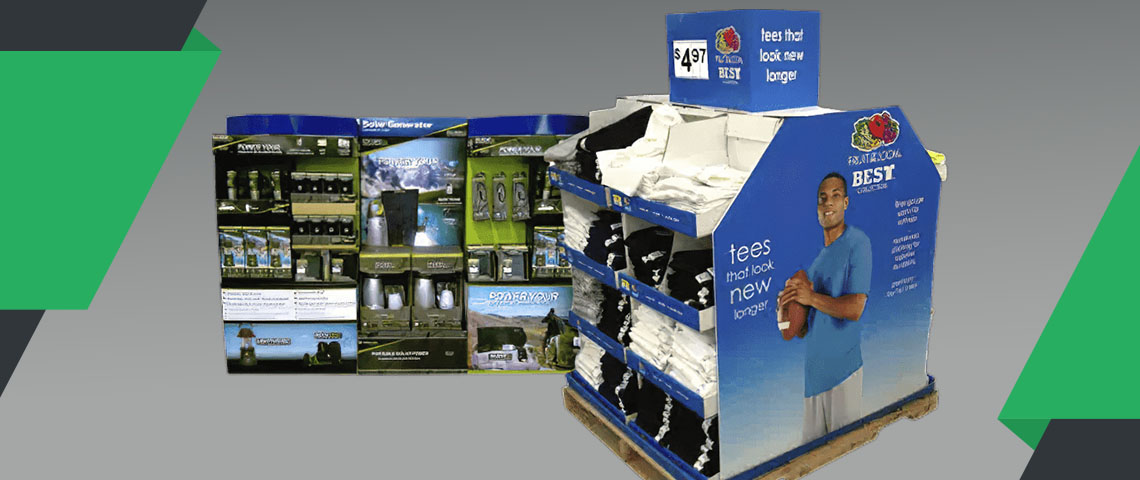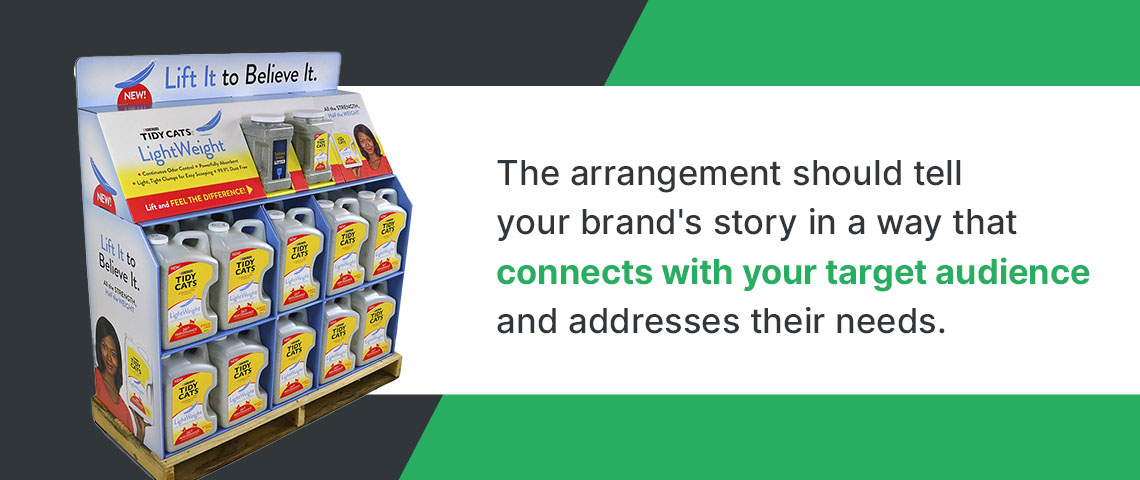Cross-merchandising is a simple and affordable advertising technique that helps you reach your target audience by partnering with other brands targeting the same audience. It involves using related merchandise displays to expose your products to customers who are already buying products that complement yours. It aims to streamline the retail customer’s journey and improve their shopping experience by making it easier for them to locate complementary products.
When done right, cross-merchandising can increase a brand’s sales by up to 20% using tools you already have — your products and unique retail displays. Before we get into how you can leverage cross-merchandising to increase sales and revenue, we define what cross-merchanding is, highlight its benefits and share some top examples of the approach.
What Is Cross Merchandising?
Cross-merchandising or secondary product placement is a visual merchandising technique that involves displaying complementary products from different categories together. It encourages customers to purchase multiple items that may be used together. The products may be grouped according to usage, category, theme and color.
Cross-merchandising influences customers’ purchase decisions by reminding them of an item they might have forgotten, inspiring them to pickup new items or encouraging them to make an impulse purchase.
Cross Merchandising Examples
Below is a look into top cross-merchandising examples to inspire you:
- Mannequins in clothing stores showcase outfits and complementary accessories to drive more sales.
- Staging rooms in furniture shops demonstrate how different furniture pieces and decor items complement each other, encouraging you to purchase more items to achieve the perfect aesthetic.
- Retail stores set up thematic cross-merchandising displays during different seasons to spark ideas. A good example is having Christmas trees and decoration items such as tinsel and tree lights on the same aisle.
- Entertainment stores display laptops next to accessories like bags, headphones, stands and screen protectors to remind customers they’ll also need these items.
Benefits of Cross Merchandising
Cross-merchandising boasts numerous advantages for customers and businesses alike. Here’s how:
- Introduces customers to new products: Displaying new products next to high-traffic complementary products helps create awareness and drive sales of the new ones. This approach may also boost the sales of your core products.
- Attracts new customers: Cross-merchandising is an effective method of tapping into a new customer base. Displaying products that can be used together next to each other helps brands appeal to new customers who value convenience.
- Improves customer experience: With cross-merchandising, customers find what they are looking for and other useful items quickly and easily. They enjoy an enhanced customer experience because they don’t need to waste time and energy walking around a store looking for additional items.
- Boosts sales and revenue: When complementary products from different categories are placed together, customers are inspired to purchase more than they’d initially planned to buy. This increases customers’ units per transaction (UPT) and their average transaction value (ATV), which results in higher sales revenue.
Strategies for Cross-Merchandising Using Retail Displays
To achieve a successful cross-merchandising campaign, you must carefully curate your custom retail displays so they can relay the intended message and drive sales and revenue. Use the following strategies for a successful cross-merchandising campaign:
1. Create a Logical Connection Between Products
Logical merchandising improves the overall customer experience and boosts sales and revenue. You can achieve this by organizing the complementary products in a way that makes sense to the customers. They must understand why the products are placed together, how they can be used together and why it makes sense to buy both. This also ensures you drive sales for both products and prevents overwhelming clients with more options than they need.
2. Understand Customer Behavior
Cross-merchandising fully relies on the client’s behavior. What do they use most? What else may they need? Are they willing to try out new products? You need to have the answers to these questions before choosing a cross-merchandising strategy. Start by collecting data on the products customers purchase most, the quantities and what products they typically purchase together. With this insight, you’ll be better positioned to grab their attention and help them make rapid decisions.
3. Storytell Through Your Display
How you organize your retail displays will either make it easier or harder for customers to make logical connections between the products. Having a thoughtful arrangement using the appropriate types of retail display shows consumers that the products are intentionally organized and prompts them to pick more. The arrangement should tell your brand’s story in a way that connects with your target audience and addresses their needs.
Here’s how you can use your retail displays to tell your brand’s story:
- Customize retail displays to create a personalized experience for your customers.
- Highlight your brand’s unique selling points (USPs) on the displays.
- Share your data insights using visual aids, such as charts, graphics, lists and maps.
4. Don’t Overwhelm Your Display With Too Many Products
Avoid overwhelming your customers by being thoughtful and intentional about how you organize your displays. Limiting cross-merchandising displays to a maximum of five items prevents customers from experiencing the paradox of choice. This is an unnerving situation where customers have too many options, making it difficult to choose one item they’re happy with. In addition, you should ensure you’re showing off as much of the product as possible to appeal to customer’s emotions.
5. Stay on Top of Industry Trends
Keeping up with industry trends helps you understand the development and changes in consumer behavior over time. Trends reveal how customers want to interact with brands and how other brands respond to them to give you an edge over competitors. For example, some retail trends worth keeping in mind as you forge a cross-merchanding strategy include that consumers now value personalization and sustainability more than ever before. Therefore, you’d be better off pairing your products with items from brands that also prioritize these trends and consumer behaviors.
Contact Creative Displays Now for Custom Retail Displays
As you can tell, your retail displays are key in ensuring you achieve your cross-merchanding goals. At Creative Displays Now, we can help you design, print and manufacture high-quality displays to market your products along with complementary products. Our team will guide you in designing displays that tell your brand’s story in a way that attracts and connects with customers.
To learn more about how our custom retail displays can improve the success of your cross-merchandising efforts, contact us online today or give us a call at 1-855-284-6922.





